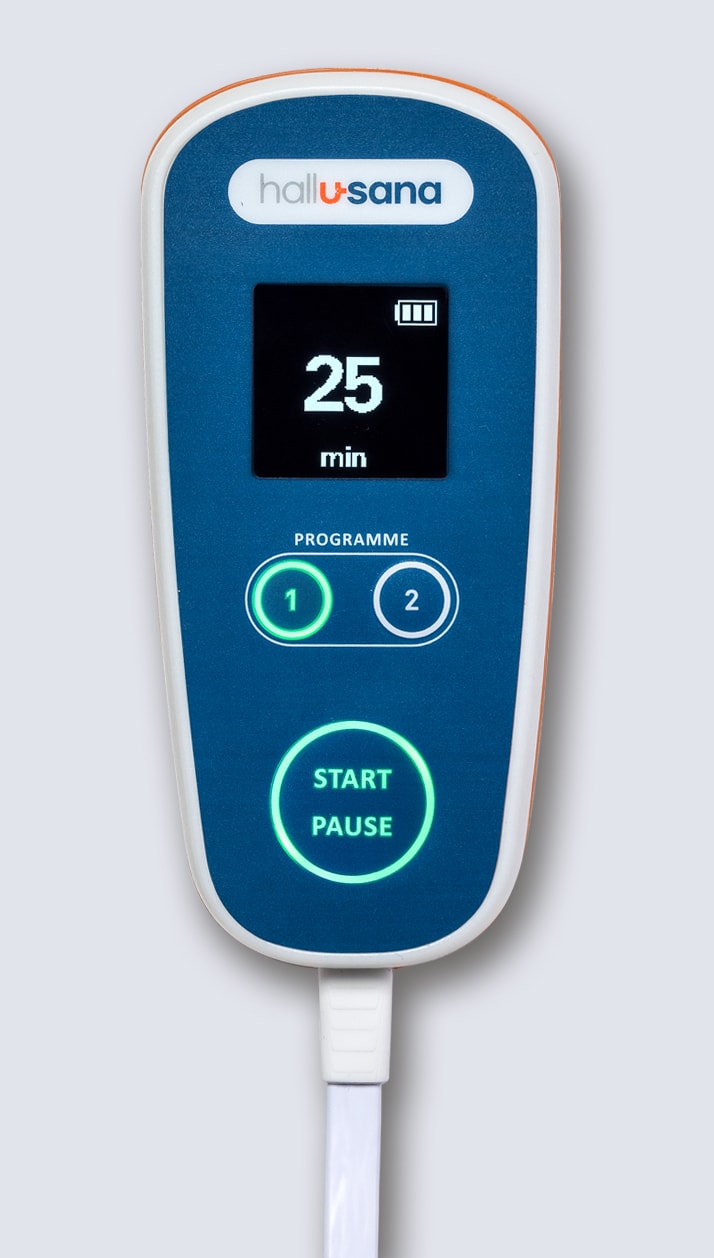The toe CPM Hall-U-Sana® in post-operative rehabilitation
CPM* therapy,
proven for decades:
now also available for the hallux
* CPM Continuous Passive Motion Therapy
** compared to no therapy
- Shortens convalescence time, speeds return to physiological movement patterns **
- Prevents stiffening
- Promotes joint mobility
- Safeguards the success of the surgery
- No individual customisation / adjustment required
- After a short learning period, can be operated easily by the patient
- Can be used on the go thanks to integrated Li-ion battery
- Designed and tested over many years of cooperation with renowned podiatric orthopaedic surgeons and experienced orthopaedic technicians
- Developed and produced in Switzerland


